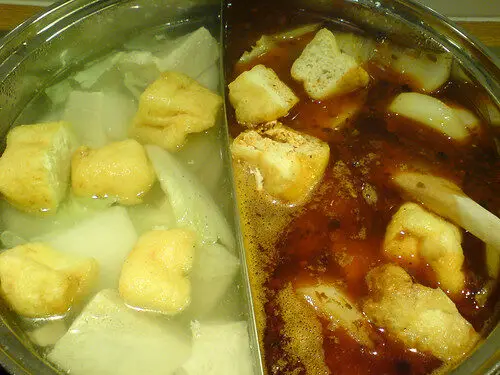
In earlier posts, I’ve described how my family and I prepare hot pot at home in How To Make Chinese Hot Pot, and what dipping sauces to use in How To Make Chinese Hot Pot Dipping Sauces. As we are originally Hong Kong Cantonese, our style is Cantonese, using a more delicate and subtle soup base.
I don’t think I’ve ever had Cantonese-style hot pot anywhere else but at home or with other relatives. It’s so easy to put together that I don’t think my mother would ever consider paying for it in a restaurant. I’m sure that if I had been raised in Hong Kong, it would have been different, as people there eat out far more, because it’s cheap and many live in small homes. I should also point out that it’s more commonly eaten during the winter months, but we (as in my family) don’t eat it on a particular day, like Chinese New Year.
Over the years, I’ve dipped my toe, so to speak, into other regional variations of hot pot, which have always been measured against the hot pot I grew up with. Different places claim to be the birthplace of hot pot, including the city of Chongqing in Sichuan province, China.
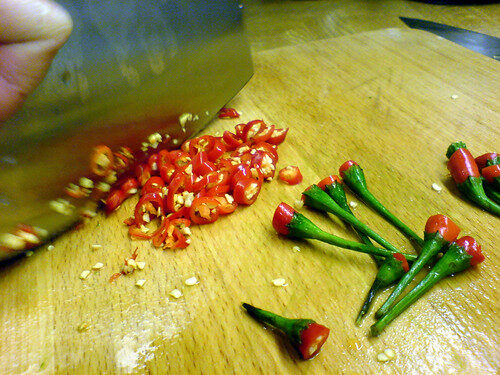
Sichuan ‘mala’ (‘numb and spicy’) hot pot is really well-known all over the world. Sichuan or flower pepper (huajiao) is added to the heavy, oily soup base, which leaves a numbing, tingling sensation in the mouth. Living in Beijing, I ate a lot of food that was prepared with liberal dashes of Sichuan pepper, but I’m still undecided about whether I like this sensation or not. Chilli oil, chillies, garlic and onions are other key ingredients of the soup base.
The level of spiciness can be adjusted, although if you’re not a huge fan of spicy food, I’d be a bit cautious. I’d also avoid eating any of the whole chillis you find in the soup base, and not to drink the broth unless you can really take hot food.
Within the ‘genre’ of Sichuan hot pot, there are many sub-genres including fish head, medicinal/tonic and yuanyang or yinyang (double taste – one spicy, one mild) hot pot. This latter seems to be really popular, and it’s good because you can switch from the intensity of the spicy base and take a break with the mild one.
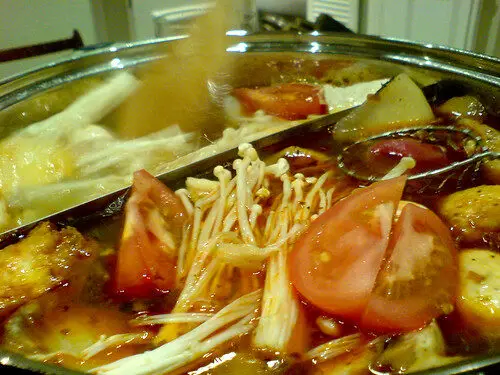
Any ingredients can be used, including things you probably won’t find so commonly outside China, like intestines, stomach, tendons, frogs and jellied duck’s blood, also known as ‘dark’ tofu. The dipping sauce is made with ingredients like sesame oil, chili sauce, peanut sauce, chopped chillies and garlic. It can be garnished with coriander. See below for one dipping sauce variation.
I’ve not prepared the Sichuan mala base before. I think unless you don’t mind buying all the ingredients, which will then most likely sit in your cupboard unused, you could cheat a bit and try a ready-made base. Lee Kum Kee, which produces good quality Chinese condiments and sauces, makes a Sichuan Hot and Spicy Soup Base for Hot Pot, which comes in a sachet and serves 4. The downside is that it contains MSG and some colourings, and I usually don’t like home-cooked food prepared with shop-bought sauces.
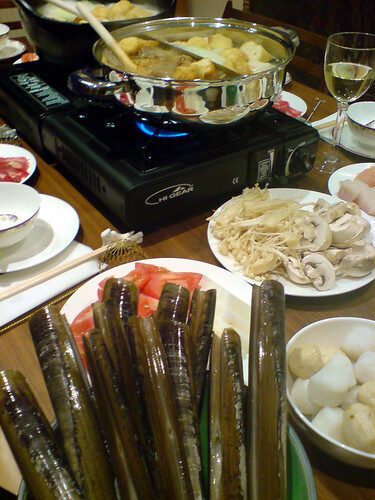
Last night we had Sichuan hot pot at a Taiwanese friend’s house, to celebrate Chinese New Year. We had one pot, yuanyang-style, divided into two sections, one for the spicy base and one for non-spicy. Then we had a separate pot for vegetarians.
It was exciting because I could eat non-vegetarian ingredients without having to worry about the vegetarian husband – including the most gigantic razor clams I had ever seen, fresh king prawns and thinly sliced, excellent quality rib-eye beef. We also had organic salmon and cod fillets, fish balls, fried tofu puffs, tofu, winter melon, tomato, enoki mushrooms, tong ho (also known as edible chrysanthemum, a leafy Chinese vegetable that is a must for hot pot, see photo below), Chinese cabbage and rice vermicelli.
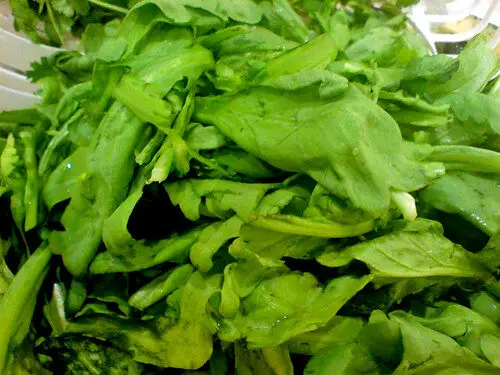
The hot pot base was ready-made, from famous Chinese company Chongqing Cygnet Group, which has 300 hot pot restaurants across China and is owned by ‘China’s hotpot queen’ He Yongzhi, one of the richest women in China. Ingredients include vegetable oil, fermented broad bean sauce, red pepper, prickly ash, salt and spices (not listed).
All you have to do is add the paste to the water when it reaches boiling point. My friend saved half the packet for the second half of the meal, because with boiling water being constantly added to top up the base, the spiciness becomes diluted. This version didn’t have any ‘mala’ sensation though (or the whole chillis!), unlike the freshly made hot pot base, which meant that I wasn’t left gasping or choking. It was perfect as it simply left a tingling sensation in the mouth, so I didn’t need to take a break and use the non-spicy base. Best of all, it wasn’t oily or heavy either.
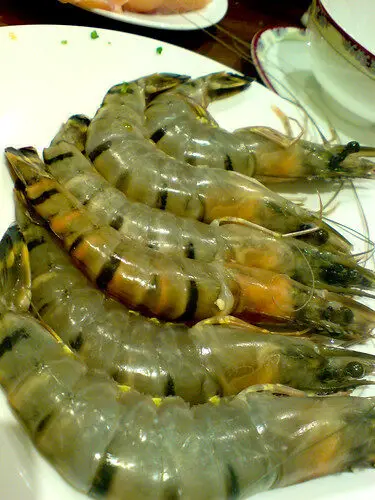
The dipping sauce was prepared by mixing plenty of shacha sauce (Chinese barbecue sauce, made from soybean oil, garlic, shallots, chillis, brill fish and dried shrimp), one raw egg (optional), plenty of freshly chopped coriander, freshly chopped red chillis (optional), chilli sauce (optional) and soya sauce (optional). I used the shacha sauce, raw egg, coriander and a dash of soya sauce. It was delicious, and I’m definitely going to use this dipping sauce from now on.
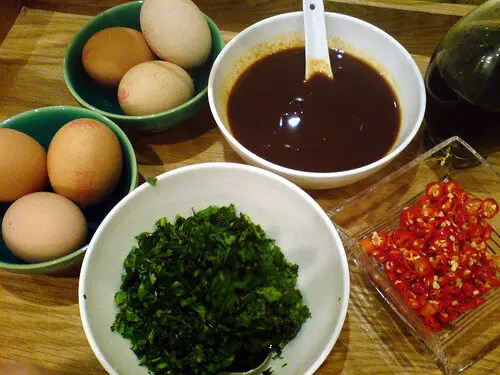
If you’d like to try Sichuan hot pot in a restaurant, there are now several places offering this in London.
- Snazz Sichuan – the last time I was there, the hot pot menu was still in Chinese only. You can still ask for it though. The pot is divided into two sections, with the mild base and the fiery version
- Bar Shu – here also, the hot pot is yuanyang/yinyang
- Red ‘n’ Hot – my friend recommends sitting upstairs and avoiding the buffet downstairs. Hot pot is £20 per person, and you can eat as much as you like. Again it’s yuanyang/yinyang
- Angeles – also supposed to be authentic Sichuan-style
I’d love to hear about your Sichuan hot pot experiences!
1 thought on “What is Sichuan Hot Pot?”